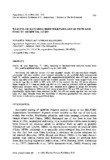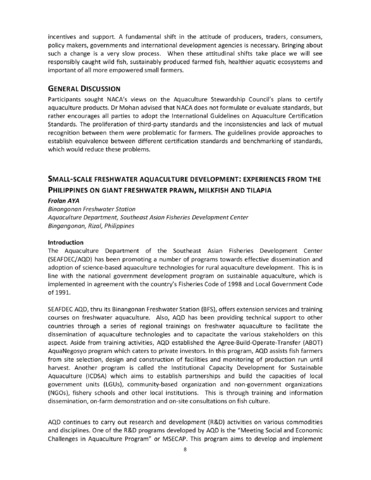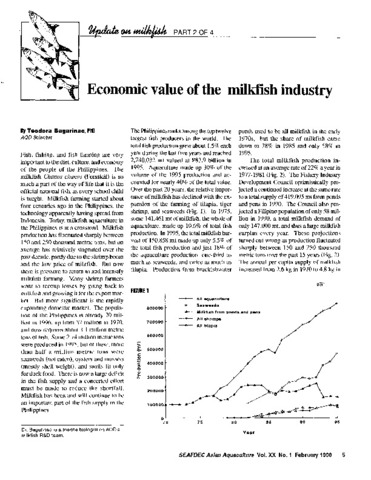Weaning of hatchery-bred milkfish larvae from live food to artificial diets
Share
Abstract
Two-week old milkfish (Chanos chanos ) larvae (7.5 mm standard length, 2.3 mg wet body weight) previously fed only rotifers were weaned abruptly to six artificial diets (commercial feed TP, artificial plankton AS and BP, experimental SEAFDEC diets CT and CB, and moist egg diet) with control larvae fed Artemia nauplii. Survival rates ranged from 38% on moist egg diet to 63% on BP, with 42% in the control. On day 43, larvae attained mean lengths of 7.7 mm on moist egg diet to 13.4 mm on Artemia , with no significant differences between diets. The mean wet weights were highest in larvae fed Artemia (77.8 mg). Results show the feasibility of weaning (gradually) even younger milk-fish larvae in hatcheries, using artificial diets.
Description
Contribution No. 146 of the Aquaculture Department, SEAFDEC.
Suggested Citation
Duray, M., & Bagarinao, T. (1984). Weaning of hatchery-bred milkfish larvae from live food to artificial diets. Aquaculture , 41(4), 325-332. https://doi.org/10.1016/0044-8486(84)90200-X
Subject
Taxonomic term
Collections
- AQD Journal Articles [1249]
Related items
Showing items related by title, author, creator and subject.
-
Small-scale freshwater aquaculture development: Experiences from the Philippines on giant freshwater prawn, milkfish and tilapia
Aya, Frolan (Japan International Cooperation Agency, 2013-12)The Aquaculture Department of the Southeast Asian Fisheries Development Center (SEAFDEC/AQD) has been promoting a number of programs towards effective dissemination and adoption of science-based aquaculture technologies ... -
Economic value of the milkfish industry
Bagarinao, Teodora (Aquaculture Department, Southeast Asian Fisheries Development Center, 1998)A brief description is given of the milkfish (Chanos chanos) farming industry in the Philippines. Over the past 20 years, the relative importance of milkfish has declined with the expansion of tilapia, tiger shrimp and ... -
Milkfish ponds from mangroves
Bagarinao, Teodora (Aquaculture Department, Southeast Asian Fisheries Development Center, 1998)




